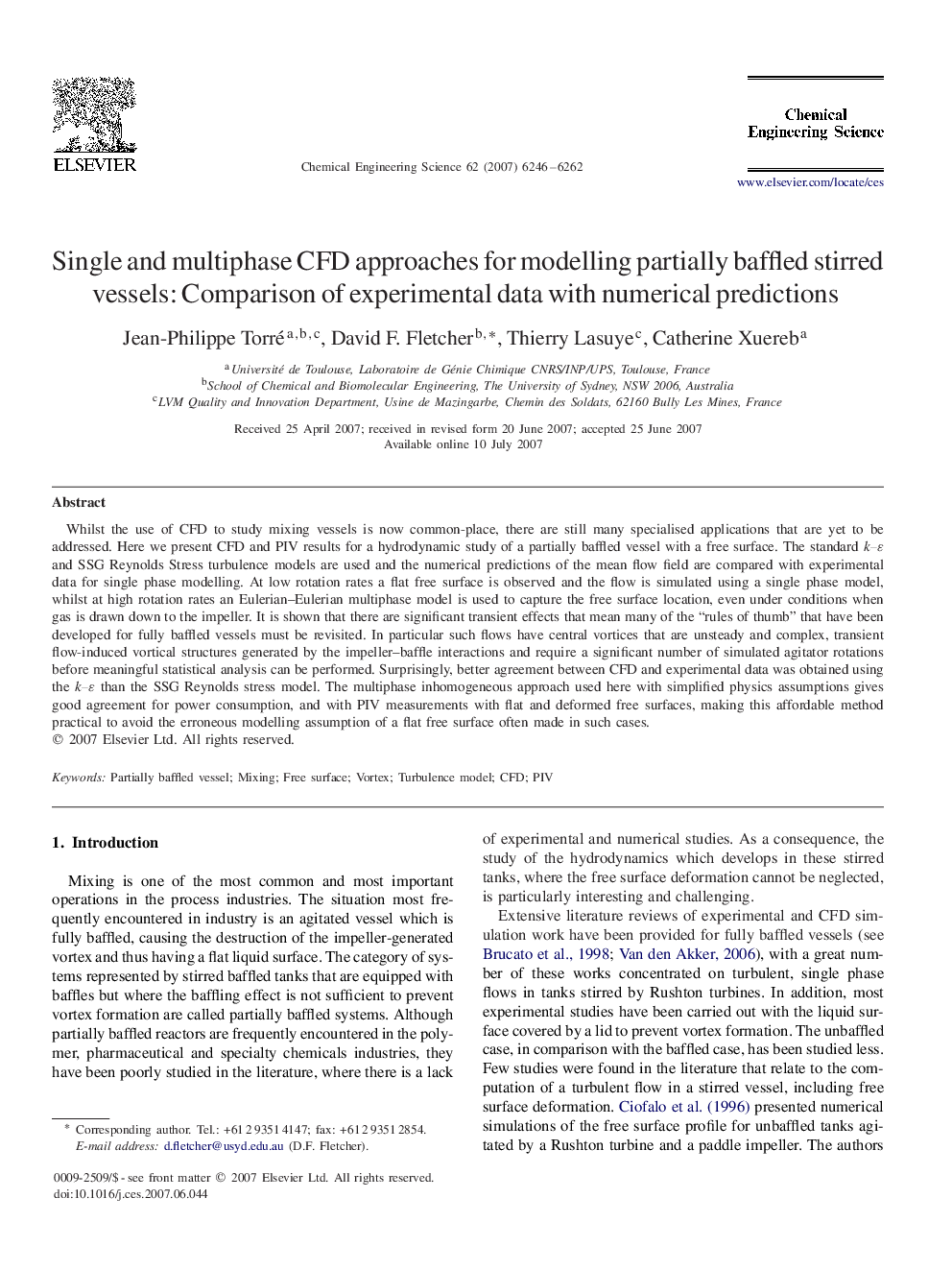| Article ID | Journal | Published Year | Pages | File Type |
|---|---|---|---|---|
| 158585 | Chemical Engineering Science | 2007 | 17 Pages |
Whilst the use of CFD to study mixing vessels is now common-place, there are still many specialised applications that are yet to be addressed. Here we present CFD and PIV results for a hydrodynamic study of a partially baffled vessel with a free surface. The standard k–ɛk–ɛ and SSG Reynolds Stress turbulence models are used and the numerical predictions of the mean flow field are compared with experimental data for single phase modelling. At low rotation rates a flat free surface is observed and the flow is simulated using a single phase model, whilst at high rotation rates an Eulerian–Eulerian multiphase model is used to capture the free surface location, even under conditions when gas is drawn down to the impeller. It is shown that there are significant transient effects that mean many of the “rules of thumb” that have been developed for fully baffled vessels must be revisited. In particular such flows have central vortices that are unsteady and complex, transient flow-induced vortical structures generated by the impeller–baffle interactions and require a significant number of simulated agitator rotations before meaningful statistical analysis can be performed. Surprisingly, better agreement between CFD and experimental data was obtained using the k–ɛk–ɛ than the SSG Reynolds stress model. The multiphase inhomogeneous approach used here with simplified physics assumptions gives good agreement for power consumption, and with PIV measurements with flat and deformed free surfaces, making this affordable method practical to avoid the erroneous modelling assumption of a flat free surface often made in such cases.
